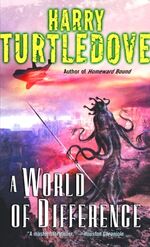Mates is the word used to refer to females in Minervan languages. In every animal species on Minerva, mates conceive six buds early in life, nourished by blood vessels which attach to the mates' cardiovascular systems. When the buds drop, the blood vessels are exposed, and the mates quickly bleed to death. Of the buds they drop, one will be a male, who can expect to live a long life, and the other five will be mates, for whom a similar fate awaits in the near future.
This harsh reality of Minerva has led to a far inferior status for mates in Minervan society. Because mates die before attaining adulthood and are not educated, many males assume they are foolish and stupid by their nature. Though some males such as Reatur sometimes develop a sentimental attachment to their mates, the mates themselves are almost always too immature to reciprocate. Mates are sequestered in special chambers and are not allowed to travel freely. There is a simile in the Omalo and Skarmer languages to describe something improbable: "as likely as an old mate."
Lamra, a mate of Reatur, became the first known mate of any Minervan species to survive budding when she had her blood vessels bound up by American astronauts who had visited Minerva aboard the Athena. A naturally intelligent individual, she was then allowed to leave the mates' chamber and live as a full member of society.
Among some non-sapient Minervan animals such as nosver and eloca, mates enjoy a more equal status with males of their species, though they too are short-lived.
When humans first made contact with Minervans, the women were assumed to be males. The revelation that some of the scientific explorers were "mates" shocked Minervans who learned about it.
See also Inconsistencies (A World of Difference)
| |||||||||||||||||||
